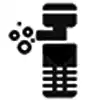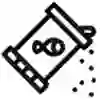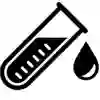Deep Sand Bed
A deep sand bed (DSB) is a filtration method used in some saltwater aquariums and some freshwater aquariums. A deep sand bed, similar to the Berlin Method, is designed to cultivate anaerobic bacteria in the bottom layers of sand, converting nitrate to nitrogen gas to remove toxic nitrates. A deep sand bed is commonly defined as a bed of fine sand with a minimum depth of four to six inches which ensures that a portion of the sand at the bottom will not be exposed to significant circulation of water. An established deep sand bed consists of sand populated with bacteria, algae and other marine organisms such as worms, crabs, snails and stars. The creatures burrow and overturn the top two to three inches of sand in search of food, which causes water to circulate deeper in the sand than it would if the creatures were not present. Deep sand beds may be made of a variety of materials, but typically fine or “”superfine”” sand is used, with a grain size between 1 mm and 0.05 mm.
DSBs have several advantages. They provide natural biological filtration, which helps maintain water quality by removing excess nutrients from the water column. They also provide a natural habitat for beneficial bacteria and other organisms that help break down waste products in the aquarium. DSBs can also help maintain stable pH levels by buffering against sudden changes in pH.
However, DSBs also have some disadvantages. They require more sand than other filtration methods, which can take up a significant portion of your aquarium space. There is also the potential for pockets of poisonous hydrogen sulphide to develop if there are not enough organisms to keep the sand bed stirred and clean.”















